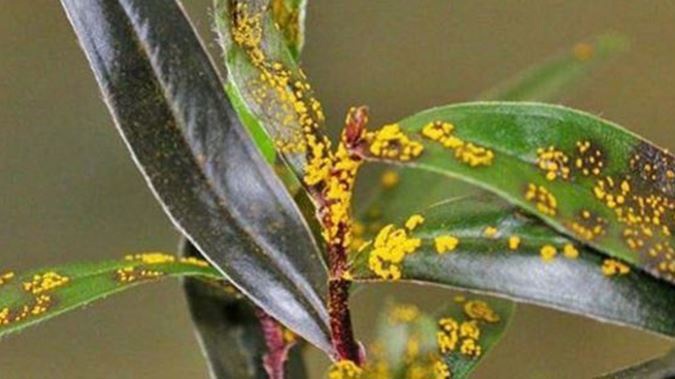
Plant fungus myrtle rust has been found in Te Puke in the Bay of Plenty region.
A 25-year-old ramarama plant in a private residential garden has been found to be the culprit, as well as the first plant outside of the infection area in Taranaki for weeks.
The number of infections found across the country grew to 41 last week, the vast majority being in Taranaki, and is now at 46.
Northland now has four infected properties, two in the Waikato and 39 in Taranaki.
Two Northland properties were found to have plants from the Kerikeri nursery where the original infections were first found in early May, and two more properties were discovered on Tuesday.
The affected plants have been removed and safely destroyed, the Ministry for Primary Industries says, and it's still trying to contain the spread.
"The public response to myrtle rust has been huge and gratifying. So far we've had 822 calls reporting suspected myrtle rust. It's vital information," MPI Myrtle rust response incident controller David Yard says.
The disease has so far been found on ramarama, pohutukawa, eucalyptus, Lilly Pilly and manuka plants, but no cases on feijoa trees have been reported, MPI says.
Myrtle rust attacks native trees and could cause serious damage to manuka trees used in honey production.
There is no known method for controlling it in the wild, other than applying fungicide in very small areas.
Take your Radio, Podcasts and Music with you









